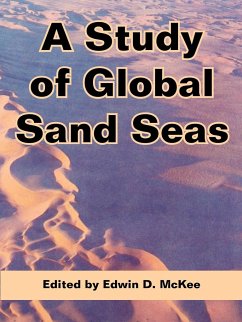Early descriptions and considerations of the characteristics of modern eolian sand deposits, mostly in the great sand seas of the world, date back to the 1880's and 1890's, when pioneer geologists and explorers wrote their classic papers on desert dunes. One or two decades later, interest in eolian processes greatly increased when wind-formed deposits were recognized in ancient sandstones in many parts of the world and in rocks of many ages. Throughout the 20th century, as the science of geology has expanded and the programs of the U.S. Geological Survey have proliferated to keep pace, dune studies have had a similar growth. Work was initially concentrated mostly on the description of dune forms or morphology and on analysis of textural features; by midcentury, however, major contributions had been made to the physics of eolian sand by detailed studies and interpretations of minor eolian structures, by statistical analyses of cross-strata dip directions, and by the development of systems for dune classification. Most recently, interest has been renewed in detailed grain studies, in the study of cross-strata, and in interpretation of dune patterns by means of aerial photographs and Landsat imagery. A major feature of this report on global sand seas is the compilation and comparison of available data based on many different methods of investigation. The application of these studies to economic problems, which is described in one chapter, clearly illustrates the importance of eolian deposits to our present culture and to human welfare. H. William Menard Director, U.S. Geological Survey
Hinweis: Dieser Artikel kann nur an eine deutsche Lieferadresse ausgeliefert werden.
Hinweis: Dieser Artikel kann nur an eine deutsche Lieferadresse ausgeliefert werden.








